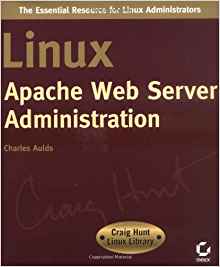This white paper provides a comprehensive overview of Linux-based web server administration, focusing on Apache HTTP Server, Nginx, and Docker. We will explore the key concepts, best practices, and practical applications of these technologies.
Linux, Apache, Nginx, and Docker: A Comprehensive Guide to Web Server Administration
Introduction
This white paper provides a comprehensive overview of Linux-based web server administration, focusing on Apache HTTP Server, Nginx, and Docker. We will explore the key concepts, best practices, and practical applications of these technologies.
Linux: The Foundation
Linux, a powerful and versatile operating system, serves as the foundation for many web servers. Its open-source nature, security, and flexibility make it an ideal choice for web development and deployment.
Key Linux Concepts for Web Server Administration:
- User and Group Management: Create and manage user accounts with appropriate permissions.
- File System Hierarchy: Understand the standard Linux file system structure and directory permissions.
- Shell Scripting: Automate tasks and streamline administration processes.
- Package Management: Use package managers like apt (Debian/Ubuntu) or yum (CentOS/RHEL) to install and manage software.
- Command-Line Interface: Utilize the command line to interact with the system and execute tasks.
Apache HTTP Server: A Reliable Web Server
Apache is one of the most widely used web servers. It offers a modular architecture, high performance, and extensive customization options.
Key Apache Features:
- Virtual Hosting: Host multiple websites on a single server.
- URL Rewriting: Redirect requests to different URLs.
- Modularity: Extend functionality with modules like mod_rewrite, mod_security, and mod_ssl.
- Security: Implement security measures like SSL/TLS, firewall rules, and access controls.
Nginx: A High-Performance Web Server
Nginx is known for its high performance, efficiency, and ability to handle a large number of concurrent connections. It is often used as a reverse proxy, load balancer, and web server.
Key Nginx Features:
- High Performance: Efficiently handles a large number of concurrent connections.
- Reverse Proxy: Forward requests to backend servers.
- Load Balancing: Distribute traffic across multiple servers.
- Caching: Improve website performance by caching static content.
- Security: Implement security measures like SSL/TLS, rate limiting, and WAF.
Docker: Containerization for Web Development and Deployment
Docker simplifies the process of building, shipping, and running applications in containers. It provides a consistent environment for development, testing, and production.
Key Docker Concepts:
- Docker Image: A read-only template containing the application and its dependencies.
- Docker Container: A running instance of a Docker image.
- Docker Compose: A tool for defining and running multi-container Docker applications.
Docker for LAMP Stack:
- Create a Docker image with a LAMP stack (Linux, Apache, MySQL, PHP).
- Configure the image to suit your specific needs.
- Deploy the image to a Docker host or container orchestration platform like Kubernetes.
Best Practices for Web Server Administration
- Security: Keep software up-to-date, use strong passwords, and implement security measures like firewalls and intrusion detection systems.
- Performance Optimization: Optimize server configuration, caching, and database queries.
- Regular Backups: Create regular backups of your data and configuration files.
- Monitoring and Logging: Monitor server performance, log errors and access logs, and analyze trends.
- Disaster Recovery: Develop a disaster recovery plan to minimize downtime in case of failures.
References:
- Apache HTTP Server Documentation: https://nginx.org/
- Docker Documentation: https://www.tldp.org/
- DigitalOcean Community:
By following these guidelines and leveraging the power of Linux, Apache, Nginx, and Docker, you can build and maintain robust, scalable, and secure web applications. contact keencomputer.com
